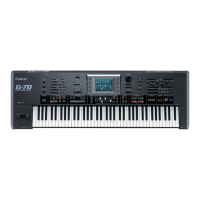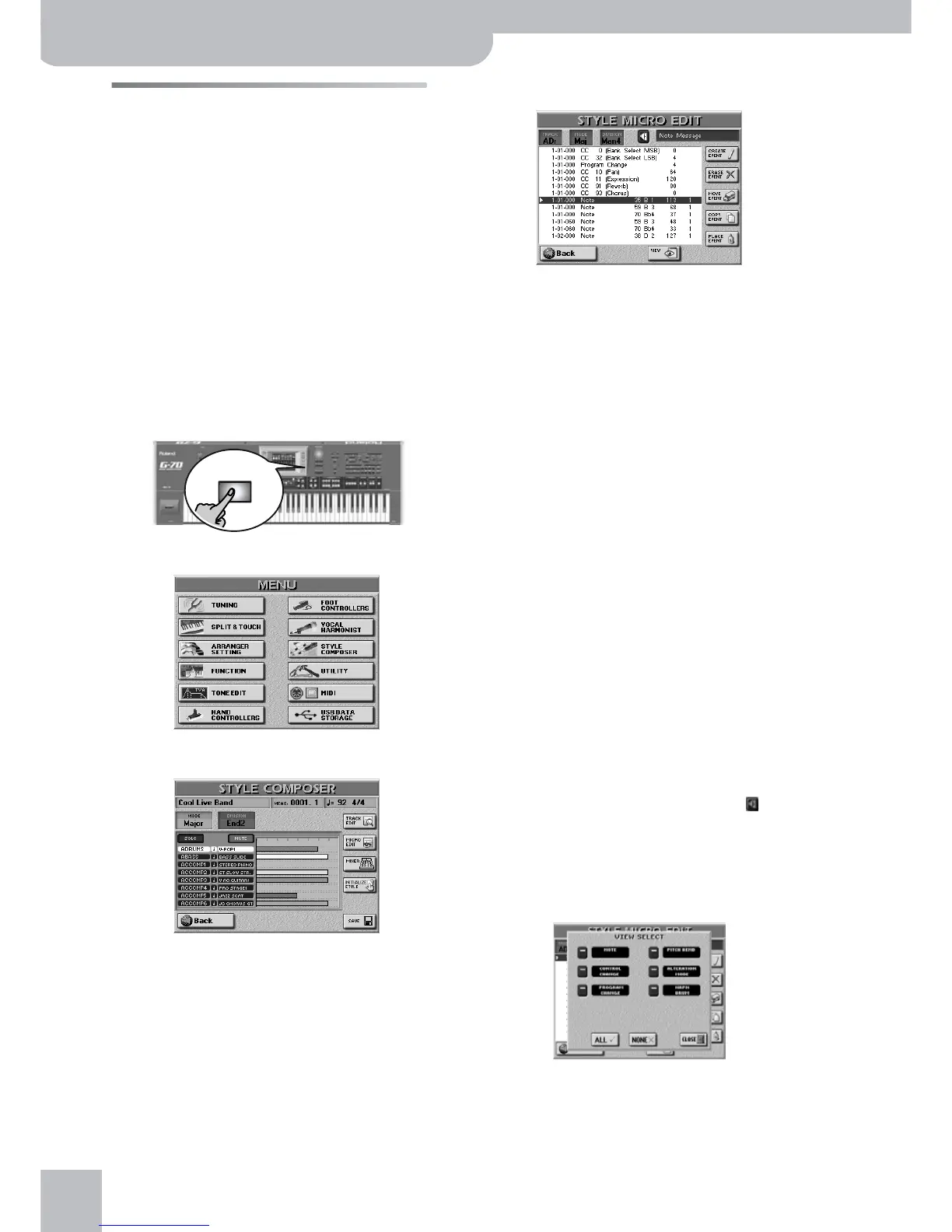Programming Styles (Style Composer)
198
r
G-70 Music Workstation
Editing individual Style events
(Style Micro Edit)
Select this mode if you need to change just one aspect
of an otherwise perfect Music Style.
In this section, we will use the word event for any kind
of message (identical to MIDI messages that cause the
Arranger to play or set something). An event is thus a
command (or instruction) for the Arranger.
You can only view and edit one track at a time. There-
fore, be sure to check the TRACK setting before editing
the events displayed on this page.
(1) Select and load a (different) Style.
This is not necessary if you want to edit the Style you
have just recorded. See “Selecting Music Styles” on
p. 27 or “Style Finder: quickly locating Styles” on p. 86
for how to load a Style.
(2) Press the [MENU] button.
The display changes to:
(3) Press the [STYLE¥COMPOSER] field.
(4) Press the [MICRO¥EDIT] field.
The display changes to:
(5) Press the [TRACK] field and use the [DATA÷ENTRY]
dial or the [DEC]/[INC] buttons to select the track
you want to edit.
(6) Press the [MODE] field and use the [DATA÷ENTRY]
dial or the [DEC]/[INC] buttons to select the Mode
you want to edit (Major, minor, 7th).
(7) Press the [DIVISION] field and use the [DATA÷ENTRY]
dial or the [DEC]/[INC] buttons to select the Division
you want to edit (MAIN 1~4, Fill Up 1~3, Fill Dwn
1~3, Intro 1~4, Ending 1~4).
General notes about STYLE MICRO EDIT
Use the [DATA÷ENTRY] dial and [ß][†] buttons to scroll
through the available events.
■Position indications
Sequencers only register “events” whose positions
and distances specify when the notes are to be
sounded or when they should change (i.e. their
“sequence”).
Each event is executed at a given point in time, which
is why they all have a position indication
(“1-01-119”, for example). The first figure refers to
the bar, the second to the beat within that bar, and
the third to the clock (CPT) between the current beat
and the next. Each beat comprises 120 clocks.
■Monitoring note events
The Style Composer can play back the note events
you select. This may help you identify the occurrence
you want to edit. Switch on the speaker icon ( ) and
move the cursor to a note event to hear that note.
■VIEW
Press this button icon if the list of track events has
become so long that finding the events you wish to
edit takes too long. The following pop-up appears:
• Switch on the button icons of the events you want to
see in the list (the button icons in question must light
in green).
MENU

